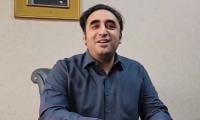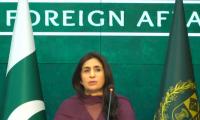The confusion over whether to privatise or not to privatise at seems to have been decided in favour of the bolder option. In a federal cabinet meeting last week, the government agreed that it would revive, not privatise, ailing state enterprises. This is a powerful move that could signal a shift in the PTI’s earlier line that it would improve the performance of state-sector enterprises before privatising them at a better rate. The task will be handed over to a newly formed entity, the Sarmaya-e-Pakistan Company (SPC). Whether the task of formulating appropriate policies will fall in the hands of the SPC or the bureaucracy should become clearer in time. More concretely, the terms under which the SPC will work will determine whether this is an experiment that will succeed or fail. The important thing for now is that the government has decided to breathe life into 195 state-sector enterprises, which are seen to need major investment and improvement. Prime Minister Imran Khan will himself have a crucial role to play as head of the board of governors of the SPC.
The information minister has talked about following the Singaporean and Malaysian models, which is all good, as long as some detail is provided on what exactly about these models the PTI is so enthusiastic about – and more importantly, what parts of it can be applied in Pakistan. The first thing to recognise is that Pakistan’s state-sector enterprises suffer from a unique problem: the debris of 30 years of privatisation-oriented policies. These policies deprived crucial entities such as PIA, Pakistan Steel Mills and Pakistan Railways of investment. The once-thriving businesses were left a shadow of their former selves. This is not the starting point for successfully operated state enterprises anywhere in the world – and it is important that the current government does not rush to embrace models that address a different time and space.
What is important is how the problems are diagnosed and whether systematic solutions can be found, which can include being open to an acceptable amount of loss being sustained as subsidy for public welfare. The diagnostic problem starts with the line that ‘the government wants to rid the ‘sick’ entities of its influence.’ This is a policy that the PML-N attempted in Punjab through public-private partnerships and for which they now find themselves in hot water. The PTI government needs to recognise that if it wants to revive public enterprises, it will be through government action, not by avoiding it. How can the PM and three federal ministers be on the board of the revival company and claim that the ‘government has nothing to do with this.’ A strong state sector is a product of a strong government-led economic process. If the government is unwilling to do so, it will find itself in the same position as its predecessors.
Representational image. —APP/FileIf you live in Karachi, or anywhere else in Pakistan for that matter, you have...
Screengrab shows X services down in Pakistan. — Geo.tvIt has been two months since social media platform X has been...
Health experts estimate an 8.0 per cent and 5.0 per cent increase in hepatitis B and C related deaths, respectively,...
PTI has managed to carve out a tough-to-defeat position in Pakistan’s politics and polity both
Rain on Sunday alone led to the deaths of 12 people – two in Balochistan, six in Khyber Pakhtunkhwa and four in Punjab
India seems to be following Israel model of carrying out assassinations on foreign soil of people it sees as a threat...







